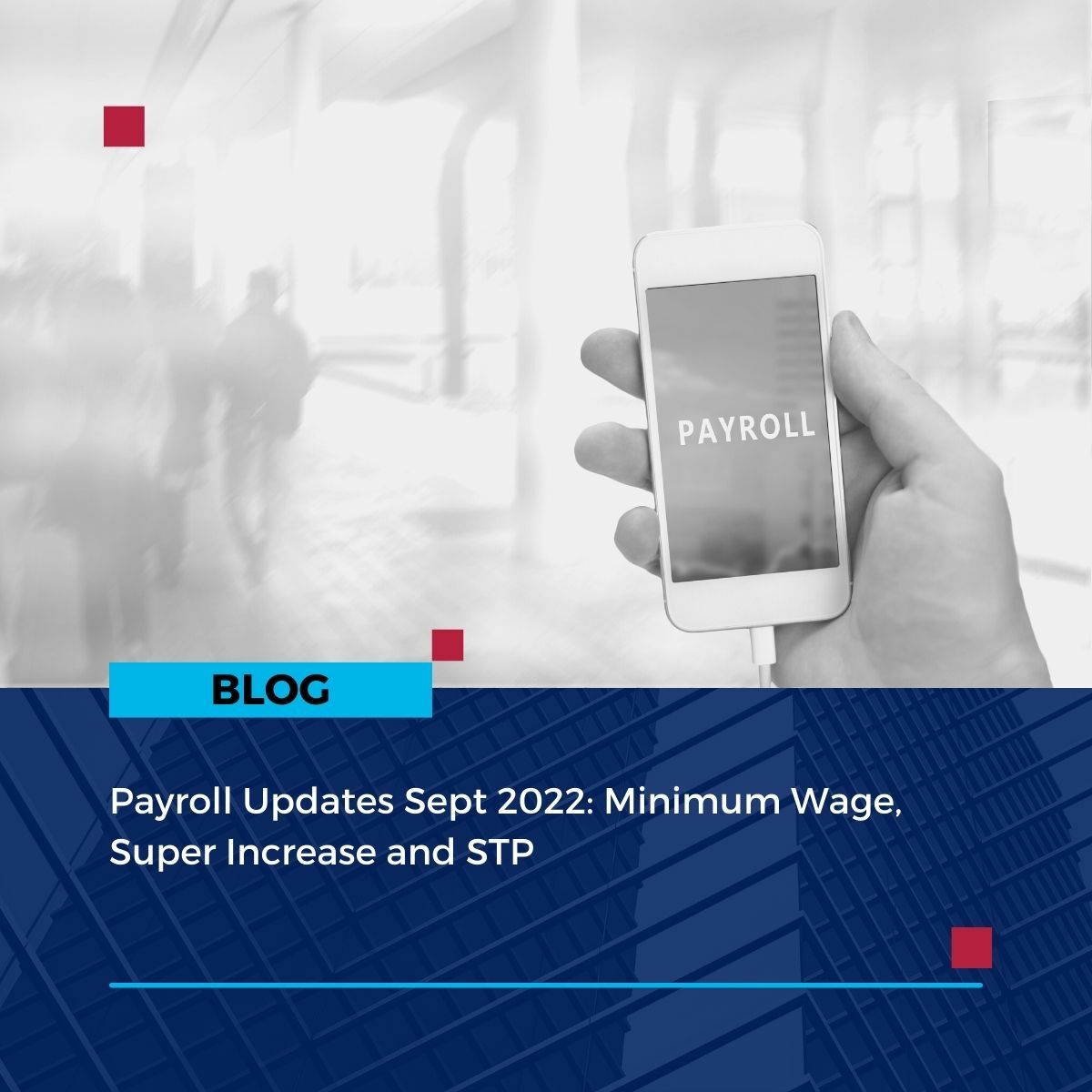
Payroll Updates Sept 2022: Minimum Wage, Super Increase and STP
Payroll Updates Sept 2022: Minimum Wage, Super Increase and STP
Are you across the recent payroll and employment law updates?
Below is a summary of these updates.
Remember, we can help check your payroll setup, award provisions, employee agreements, and payroll costing. We can also assess if your software is ready for ATO STP Phase 2 reporting, so feel free to get in touch.
Minimum Wage Increased on 1 July 2022
The national minimum wage increased on 1 July by 5.2% to $21.38 per hour (or $812.60 per week).
The minimum wage increase applies to employees if an award or national minimum wage defines their pay rate.
This year, the Fair Work Ombudsman (FWO) has once again implemented minimum wage increases to awards in a staggered approach. Most awards increased on 1 July; however, some will increase on 1 October.
For full details of October award increases, visit Fair Work Ombudsman October 2022 minimum wage increase. The main industries changing in October are Aviation, Hospitality and Tourism.
Tax Table Updates
While most tax tables remain the same for the 2022-23 financial year, the annual indexing of the study and training support loans have been applied.
Check the study and training support loans and working holiday makers tax tables for current withholding rates.
If you use online payroll software, the updates will be taken care of already. But if you process payroll manually, you’ll need to factor in the new rates for these tax types.
Superannuation Increase from 1 July 2022
The superannuation guarantee statutory rate increased to 10.5% on 1 July. Your payroll software should automatically update the rate, but check that the rate has updated, just in case you have manually entered the rate for some employees or payroll categories.
Review any agreements or annualised salary arrangements you have with employees that may be inclusive of superannuation.
Also, remember that the monthly $450 threshold has been removed, meaning that you must pay superannuation for all earnings. If you have a large casual workforce, this could impact your costs significantly.
Your first quarterly superannuation payment at the new rate will be due in October 2022.
Unpaid Pandemic Leave Reinstated for Some
During the COVID-19 pandemic, Schedule X was added to most awards to allow for two weeks of unpaid pandemic leave. The schedule expired in June 2022 but has been reinstated for some awards:
- Aged Care
- Ambulance and patient Transport
- Aboriginal and Torres Strait Islander Health Services
- Health Professionals and Support Services
- Supported Employment Services
- Social, Community, Home Care and Disability Services
Employees who no longer have unpaid pandemic leave available in their awards can take personal leave if unwell or use annual leave if they need to isolate themselves but are otherwise well enough to work. They can also use carer's leave if they need to look after unwell family members.
Review Your Payroll
Now is an excellent time to assess your payroll systems in readiness for the busy summer season ahead.
Talk to us. We can help check your payroll setup, award provisions, employee agreements and payroll costing.
There are many details to take care of when engaging workers, and we can also advise on the software you are using and make sure it meets the ATO’s Single Touch Payroll reporting requirements. Note: STP reporting requirements are due for all employers by 31 December unless you use Xero, in which case the date has been extended to 31 March 2023.








